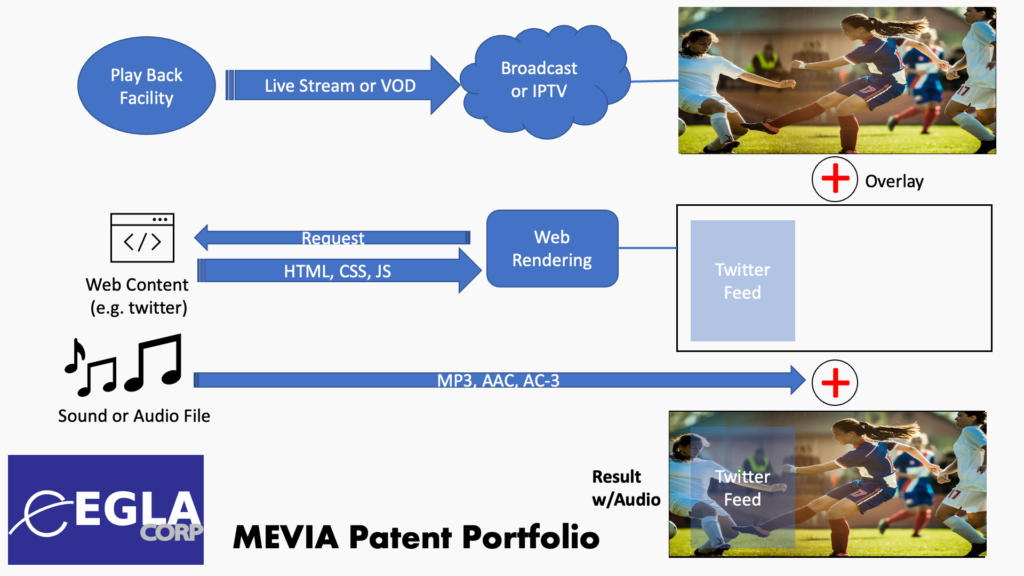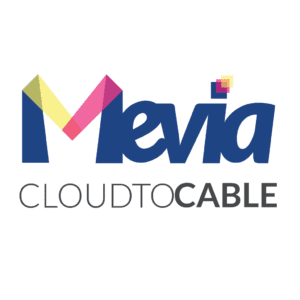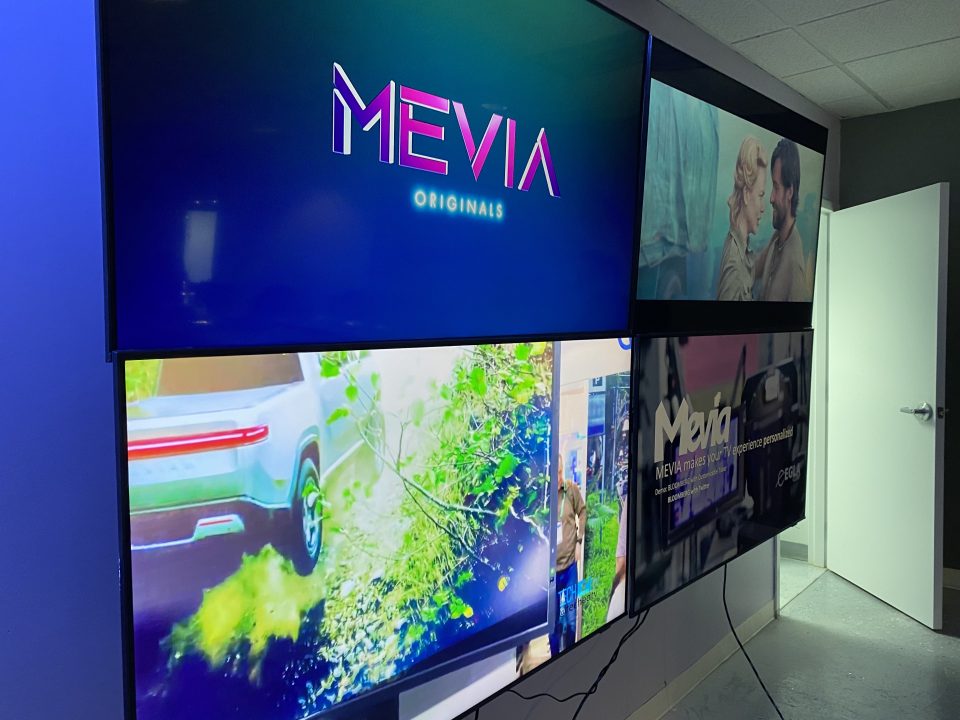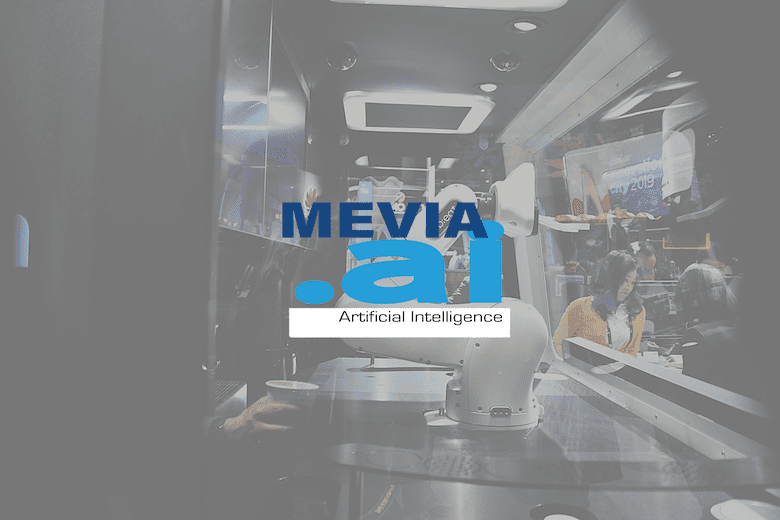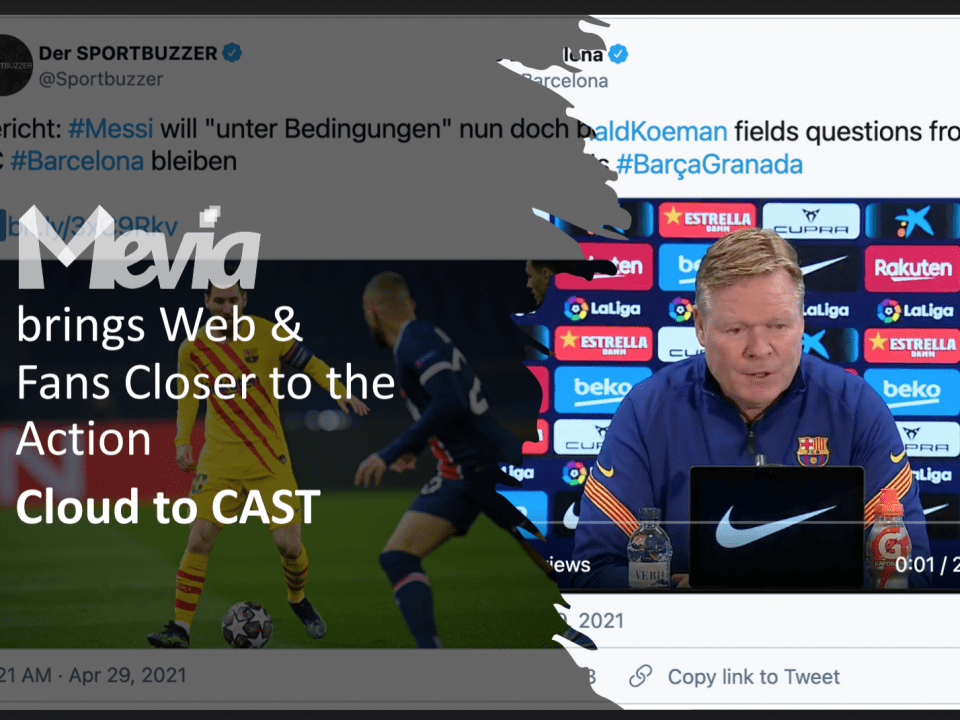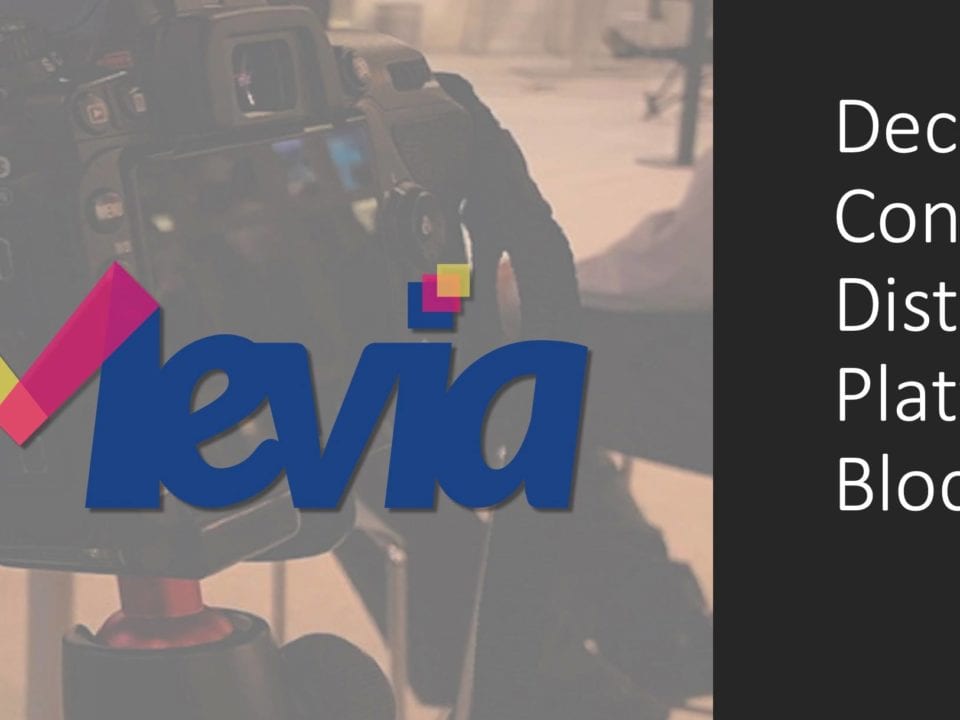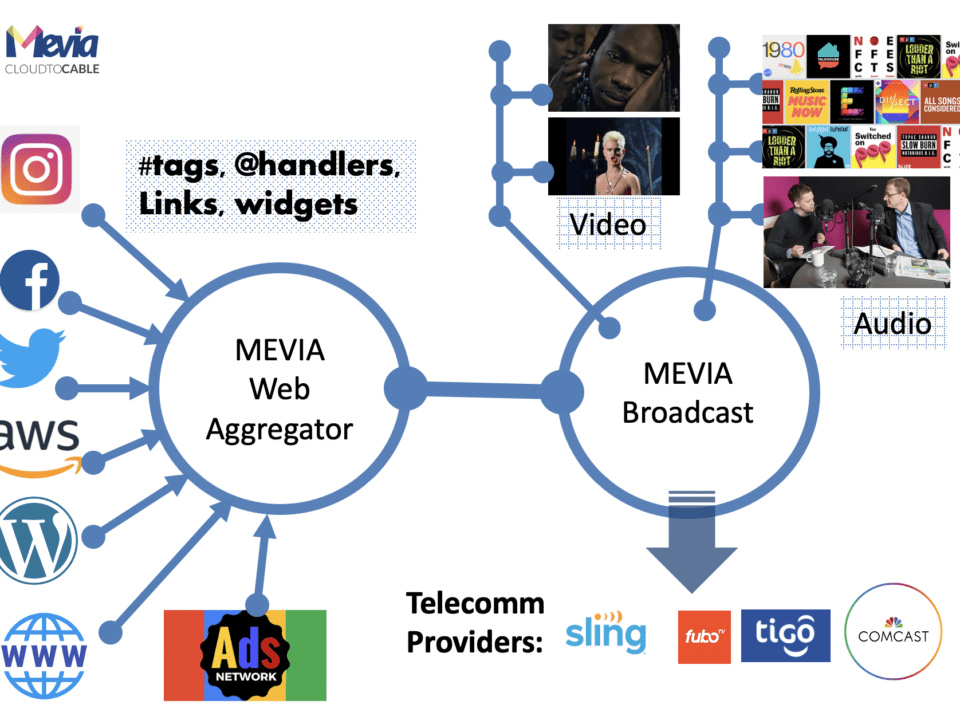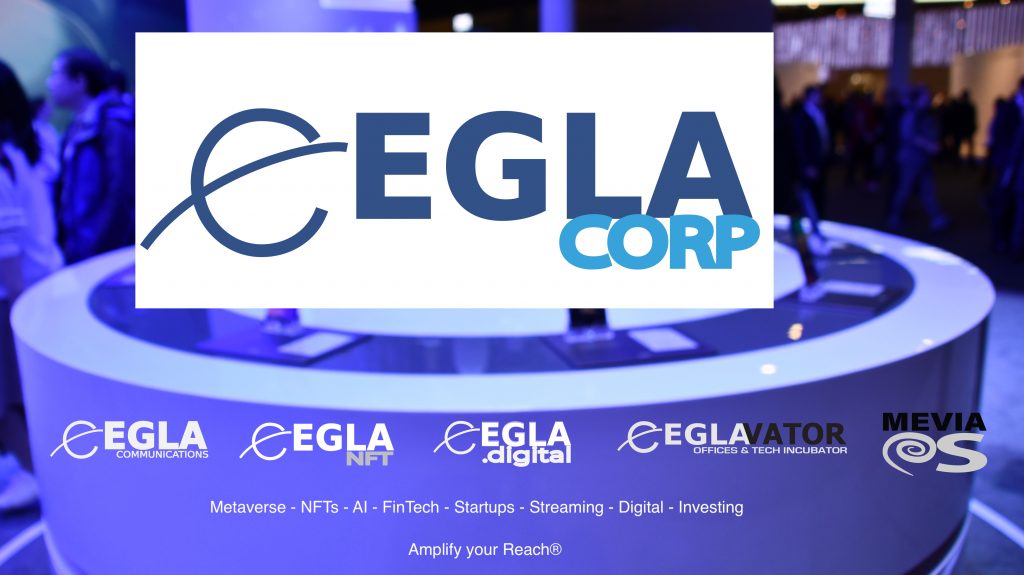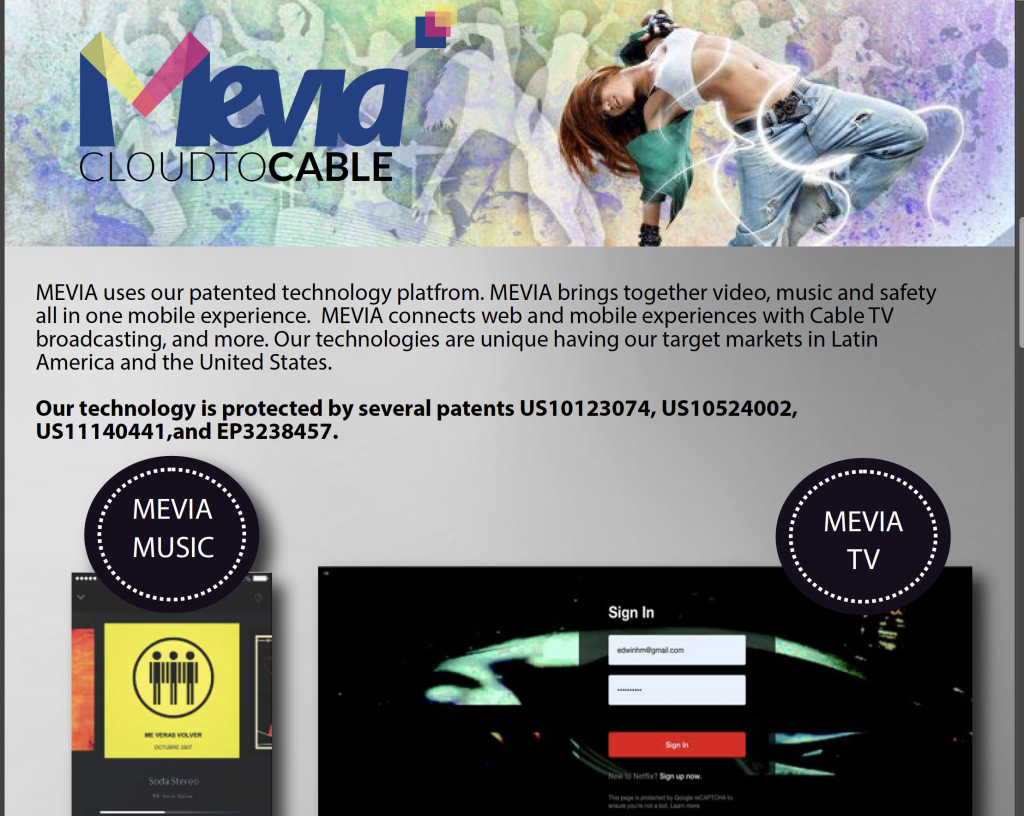
This portfolio consists in 4 issued patents (3 US, 1 European, US Patents 10,123,074, 10,524,002, 11,140,441, European Patent EP3238457A1) and 1 continuation patent US 17/493,490, which are critical to a rapidly developing new technology and new market called NextGenTV (ATSC 3.0). Dr. Edwin A. Hernandez PhD created these patent several years ago, and it was only recently he began to understand the importance of the patents and the long-term value proposition of the patents.
The original patents were developed by EGLA CORP because of Dr. Hernandez’s interest in improving upon how text/boxes of information were integrated into a final video feed by the cable and video broadcast industry. The older technology was more hardware-based and was not HTML-enabled. Imagine the integration of Web-based stock tickers, news feeds, animation, ads, interstitials or any other type of final video stream you can view with integrated parts of the video screen.
The previous technology used physical encoders and hard-coded graphics to one final video and many other encoders. MEVIA brings the solution to software, HTML web-ages, and interactive TV is modernized. EGLA CORP’s patents and prototypes allows all of this integration virtually and fully customizable in a per-user basis.
MEVIA Patents Portfolio Graphical Representation
As shown below, a media provider usually owns a "play back" facility. This facility contains all videos that are generating a Linear TV stream which is being broadcasted to Cable TV, Satellite, or Over-the-Air. In my invention, the mediaplug can perform all these steps in a single box without requiring of a different facility. Hence, a video can be broadcasted to a DOCSIS 3.0 system directly from the mediaplug, as the mediaplug counts with a caching unit and multicasting units that encode and transcode all streams.
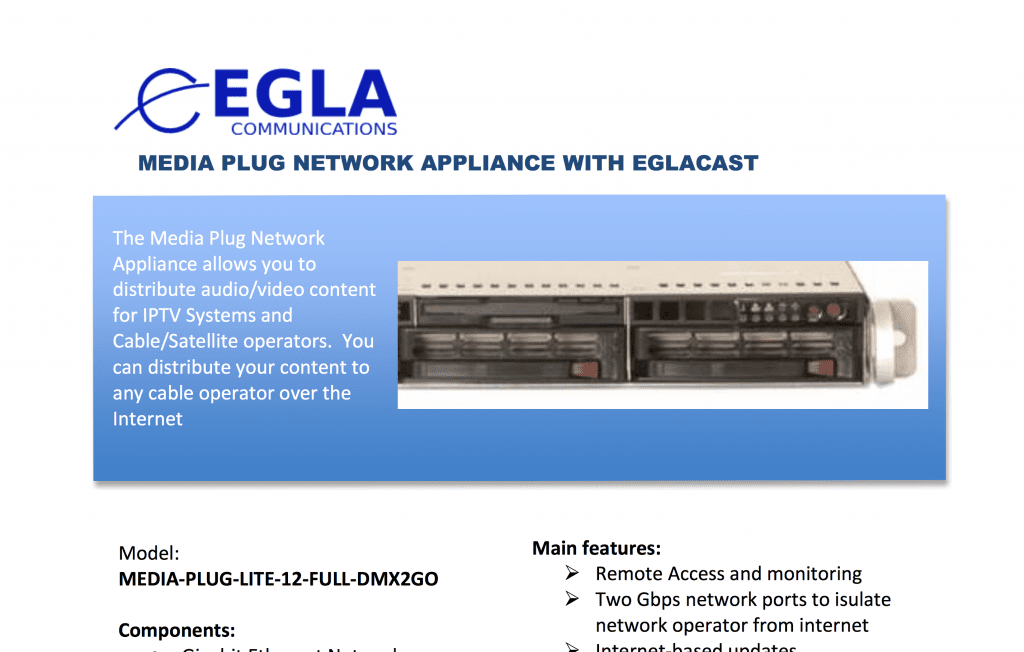
In the case of ATSC 3.0, this is done as an over the air transmission system. In, many TV broadcast medium, specially those over IP use a "multicast network." The mediaplug is then equipped to handle any multicast network. In this "multicast network," thousands if not more subscribers are connected and watching several streams.
The current MEVIA implementation uses software to connect to the web, retrieve HTML content and render that content to be overlaid on top of the originated stream from the broadcast. This widget is then ready to be presented to the user. At that point, once the overlay is on top of the video, = special music or audio streams available can be added for the user to have a richer experience. Those are audio assets are made available for the rendered video to create a resulting video that ultimately the user will see.
The ATSC 3.0 standard, which uses an HTML-like video delivery platform, is exactly what the patents are designed to describe. There is 1 issued patent that reaffirms the ATSC 3.0 technology in Europe and that increases the value of all the patents and their legal standing.
Method, system, and apparatus for multimedia content delivery to cable TV and satellite operators
US Patent 10,123,074
Systems, methods, and computer-readable media for delivering multimedia content from the cloud to cable operators are disclosed. A device located at the cable headend or implemented in the cloud can receive a request for at least one media stream for playback on a broadcast media channel. Content corresponding to a plurality of multimedia files in the media stream can be obtained from the internet or a cloud based service. The content can be used to generate the multimedia files in a format that is compatible with the cable operator. The multimedia files can be used to assemble the at least one media stream which can be provided to the cable operator for broadcast on the broadcast media channel.
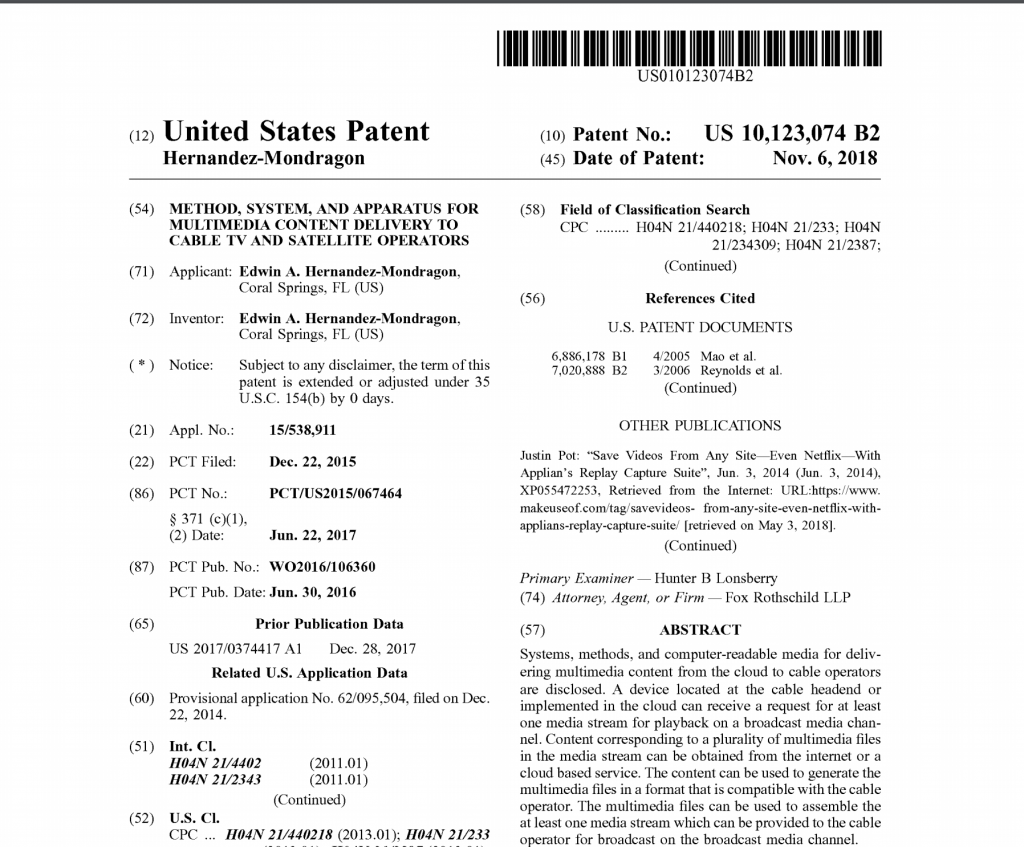
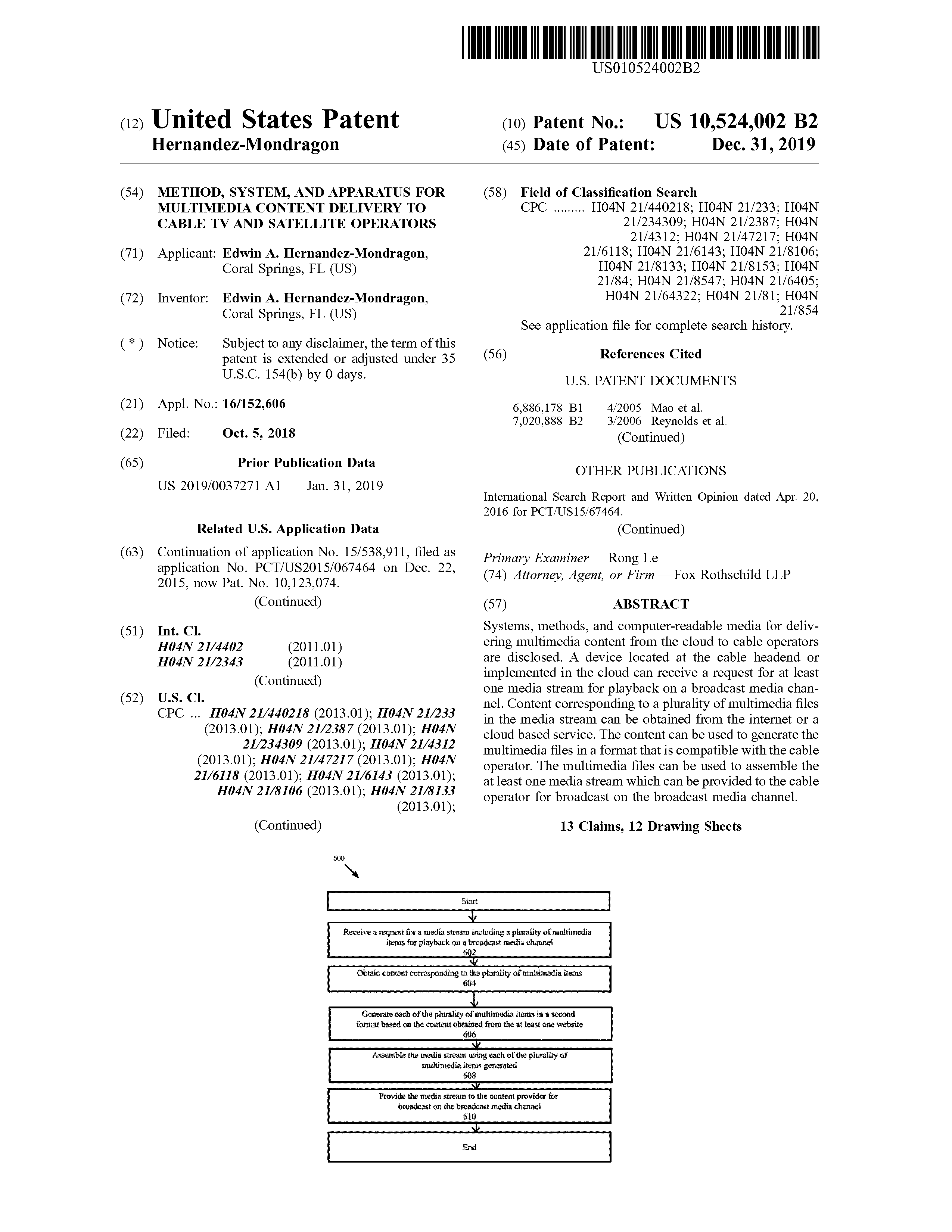
METHOD, SYSTEM, AND APPARATUS FOR MULTIMEDIA CONTENT DELIVERY TO CABLE TV AND SATELLITE OPERATORS
US Pat 10,524,002
Continuation from the '074 Patent.
METHOD, SYSTEM, AND APPARATUS FOR MULTIMEDIA CONTENT DELIVERY TO CABLE TV AND SATELLITE OPERATORS
US Patent 11,140,441
Continuation of the '074 Patent
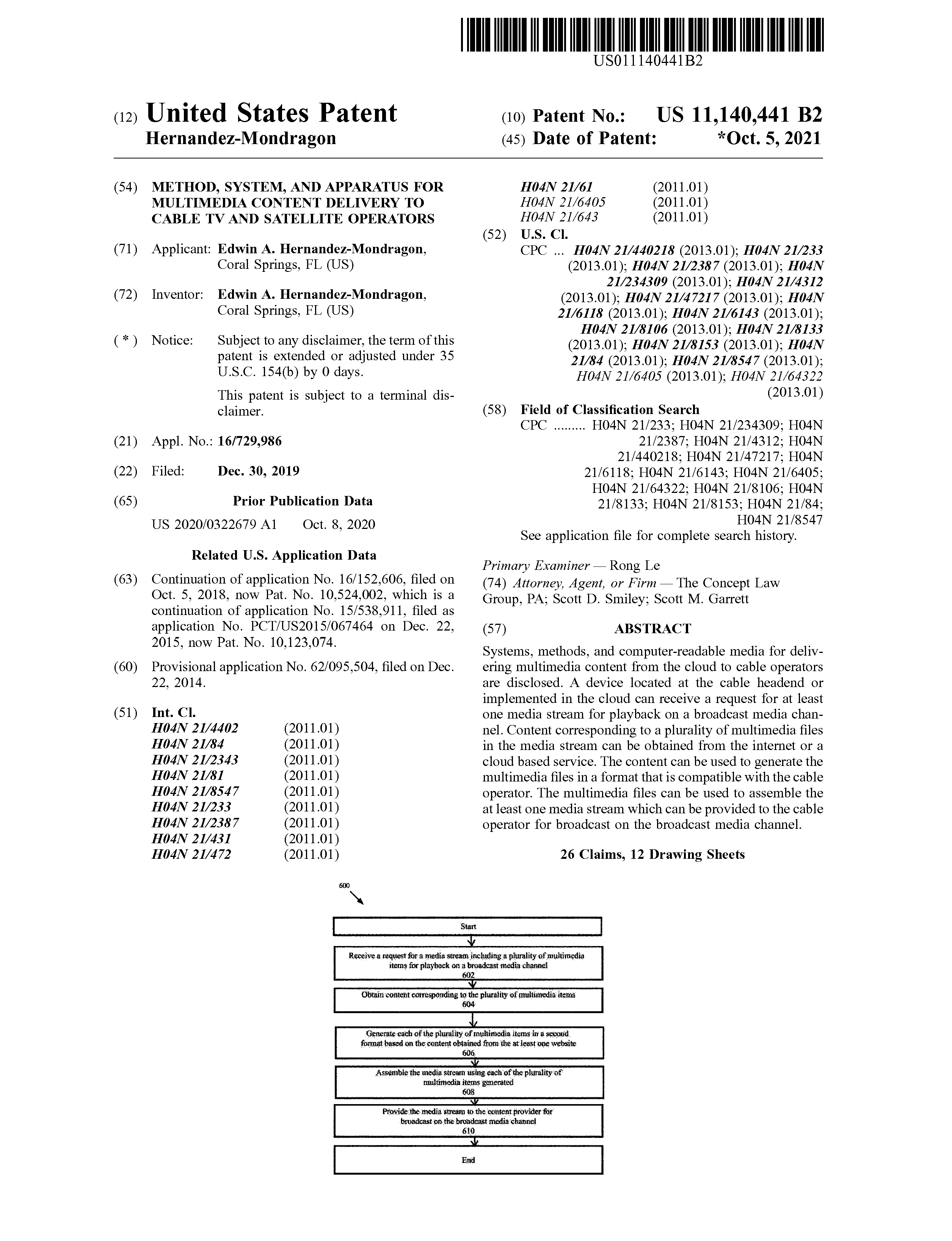
METHOD, SYSTEM, AND APPARATUS FOR MULTIMEDIA CONTENT DELIVERY TO CABLE TV AND SATELLITE OPERATORS
European Patent EP3238457A1
Systems, methods, and computer-readable media for delivering multimedia content from the cloud to cable operators are disclosed. A device located at the cable headend or implemented in the cloud can receive a request for at least one media stream for playback on a broadcast media channel. Content corresponding to a plurality of multimedia files in the media stream can be obtained from the internet or a cloud based service. The content can be used to generate the multimedia files in a format that is compatible with the cable operator. The multimedia files can be used to assemble the at least one media stream which can be provided to the cable operator for broadcast on the broadcast media channel.
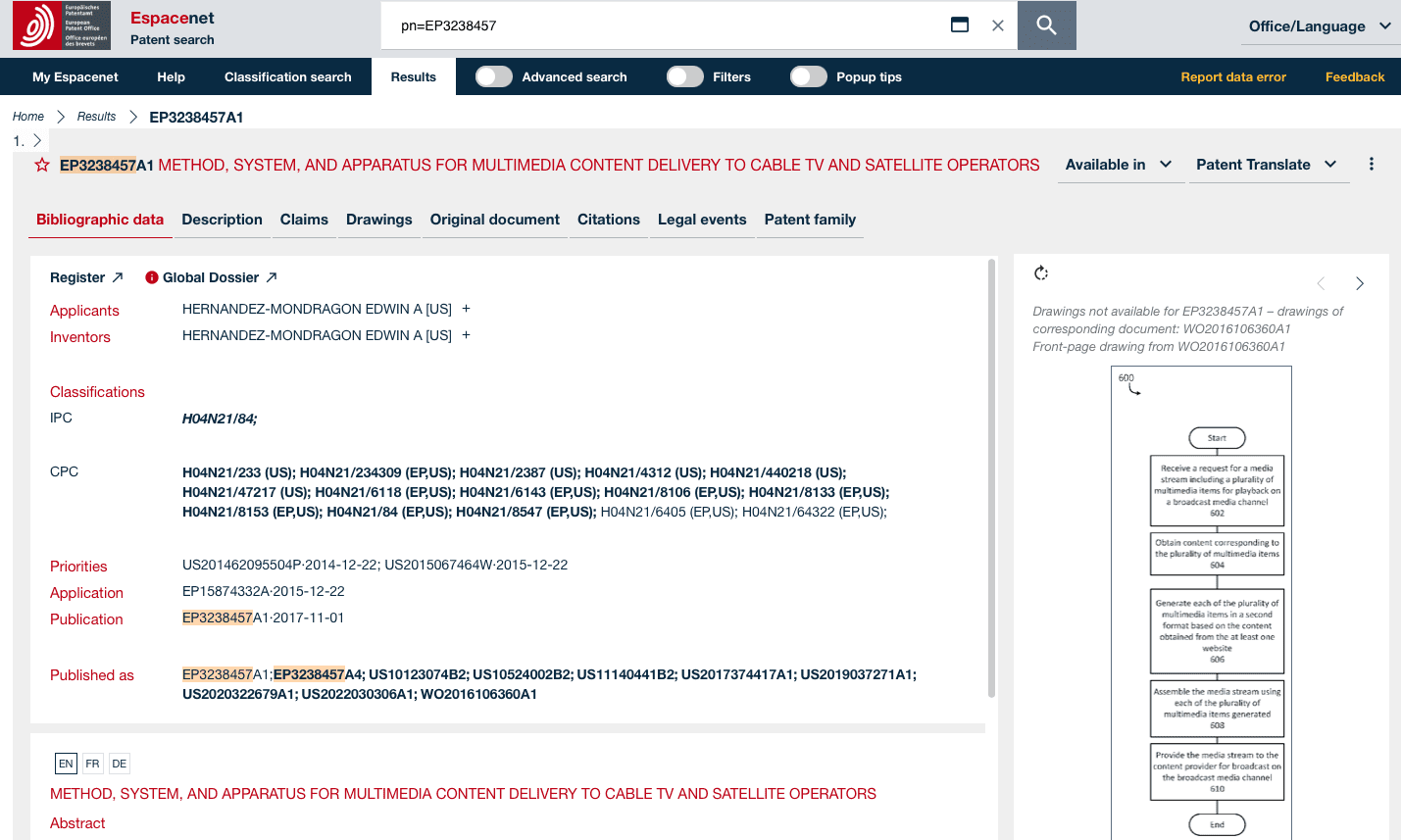
Continuation Patents
- US 17/493,490
- European Patent to be filed for continuation
Attorneys: Dickinson&Wright, Zeisler Law, Machat Law.
Platform in Use
MEVIA uses these patents in their software and the platform The software platform is also available for licensing and is being in use at CABLE COLOR Honduras..

